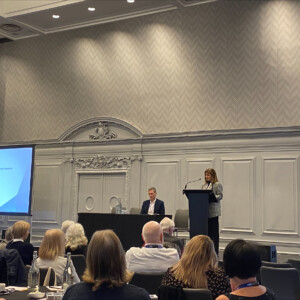 The “spiritual home of Scotch whisky” is set to open its doors once more, more than 500 years after the first drop was distilled.
The “spiritual home of Scotch whisky” is set to open its doors once more, more than 500 years after the first drop was distilled.
Lindores Abbey in Newburgh on the north coast of Fife is widely regarded as the spiritual home of Scotch whisky through its association with Friar John Cor who in 1494 paid duty on malt in order to make Aqua Vitae for King James IV. This recognition in the Exchequer Roll makes it the first written evidence of whisky distillation in Scotland.
Friar John Cor was of the Tironensian Order of monks who brought the art of distillation and brewing along with their fruit growing horticultural skills to Scotland.
Now leading land and estate experts Bell Ingram have been appointed to help to bring the Abbey and surrounding area back to life through the creation of a whisky distillery and visitor experience at Lindores Abbey, the spiritual home of Scotch whisky.
Currently the Abbey is a romantic ruin but a share of the proceeds raised from the project will be directed towards the preservation of this significant historic monument.
Director Iain Cram said the project is of great significance as he believes it will become a top destination for whisky lovers who want to see where whisky was first made and visit the Abbey where Monks created the national drink.
He said: “We are delighted to be part of this project as it will see what is known as the spiritual home of Scotch whisky being brought back to life once again.
“Lindores Abbey is recorded as being the first place whisky was distilled in Scotland over 500 years ago and so it makes perfect sense to create a distillery here, using the water from the Holy Burn and malting barley from the family fields, much as the original monks would have done all those years ago.
“The original steading stone walls on the land will play a significant part in the construction as we’ll use part of this structure to make the visitor centre which will hopefully encourage locals and tourists to find out more about the whole distillation process.
“However, there was never a fully functional distillery on the site like we see nowadays with copper stills which is what we wish to create here. It will attract people from across the world as well as create jobs and give a great boost to the local area.”
Bell Ingram is acting on behalf of the Mckenzie Smith family who have farmed here since 1913. After learning of the significance behind the Abbey, they are looking to work with private investors to create a new distillery and inject life back into the place where whisky was originally distilled over five centuries ago and let the public learn more about the ancient process.
Andrew McKenzie Smith said: “It is a privilege to be the custodian of such a historic property and in our centenary year it is tremendously exciting to be embarking on this project, where we can once more produce Scotch whisky at Lindores.
“As anyone who has ever been involved in such a project will realise, the figures involved could seem a little daunting, however the potential rewards are very impressive and we are currently seeking suitable partners to join us on this exciting journey.
“With leading wood and maturation expert Jim Swan on board we will have a superb quality single malt within five years so it’s worth waiting and taking our time to get perfection. After all, it has taken over 500 years to get it right.”
Lindores Abbey was founded by David, Earl of Huntington in 1191 and was visited in 1298 by William Wallace after his victory at the nearby Battle of Blackearnside.
It was in the Exchequer rolls of 1494 that the mention of the words “Aqua Vitae” meaning “Water of Life” were first written, this is the earliest written reference to the production of what is now known as “Scotch Whisky”.
The Exchequer roll, which is held in the Scottish National Archives, in Edinburgh, reads:“To Friar John Cor, by order of the King, VIII bols of malt, wherewith to make aqua vitae. Eight Bols of malt was enough barley to produce around 1500 of today’s bottles of whisky.
However, in 1559 the Abbey was destroyed by John Knox and his supporters and began to fall into decline which over the passing centuries has resulted in the structure crumbling into disrepair. In 1913 the Mckenzie Smith family purchased the Abbey and now want to see the area once again on the map as the Spiritual Home of Scotch whisky.
 Leading whisky expert Dr Jim Swan has been commissioned to create what will be a delicate, light, fruity Lowland single malt.
Leading whisky expert Dr Jim Swan has been commissioned to create what will be a delicate, light, fruity Lowland single malt.
Bell Ingram Design, Historic Scotland and The Fife Economic Development team have been instrumental in carrying out a detailed feasibility study and are extremely encouraged by the results.
Established in 1899, Bell Ingram is a multi-disciplined firm of chartered surveyors, planning consultants, architects, estate agents, building surveyors and energy specialists. With more than 100 professional staff across 11 UK offices they provide local knowledge with national coverage.












